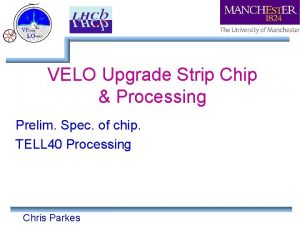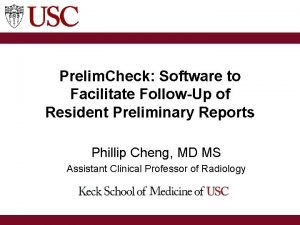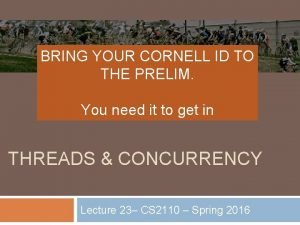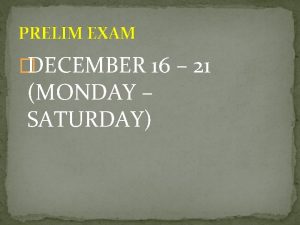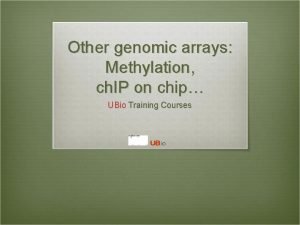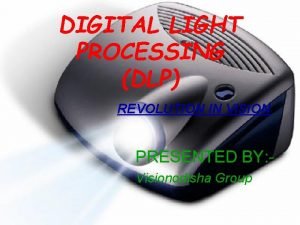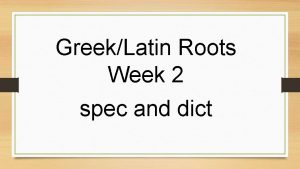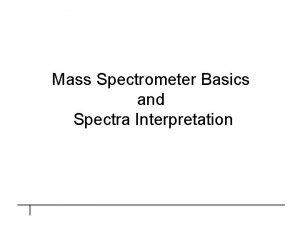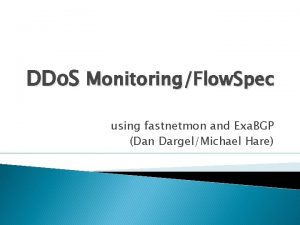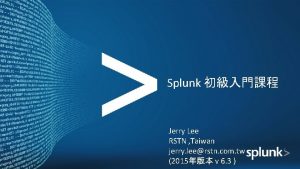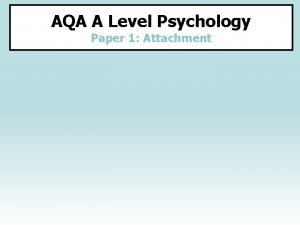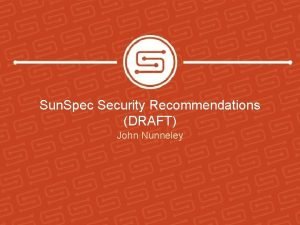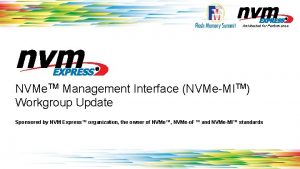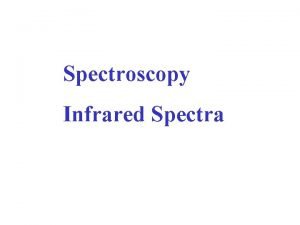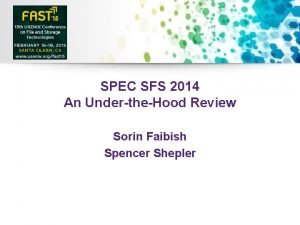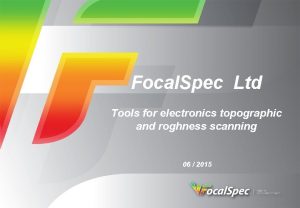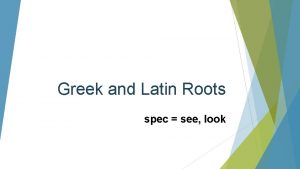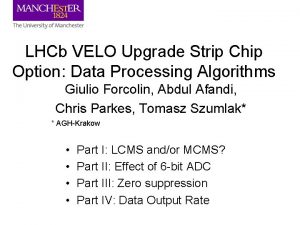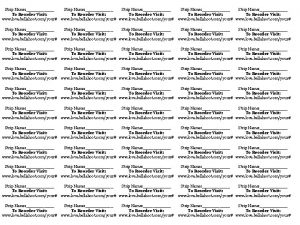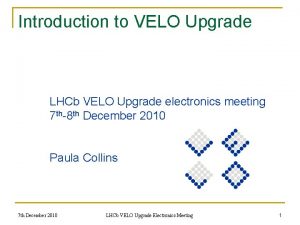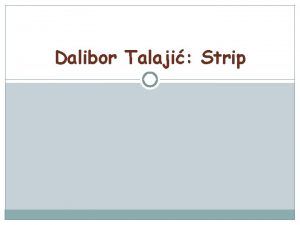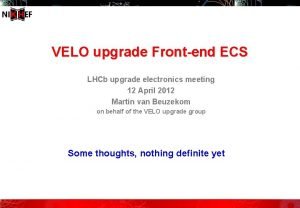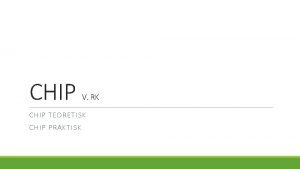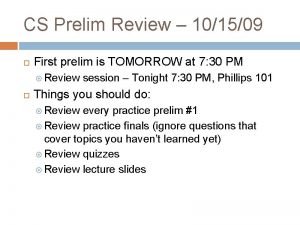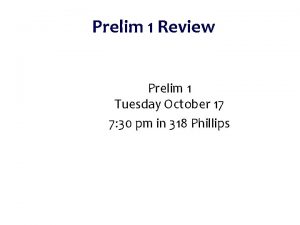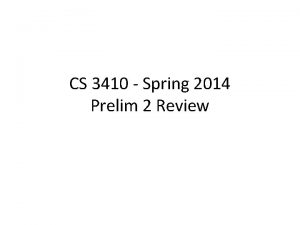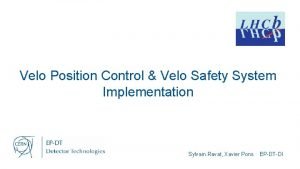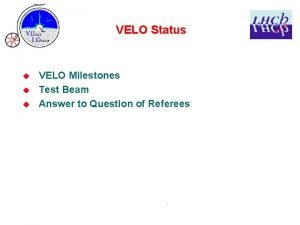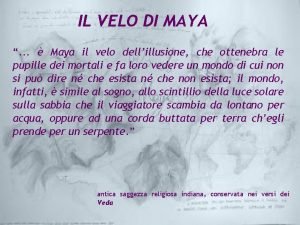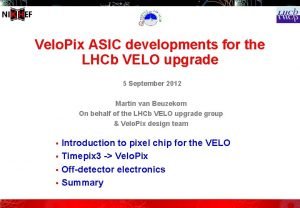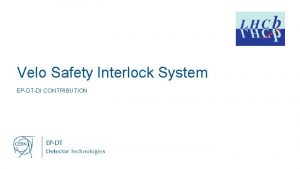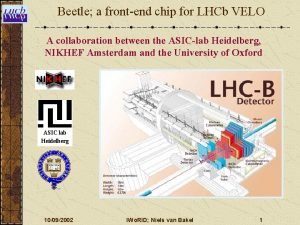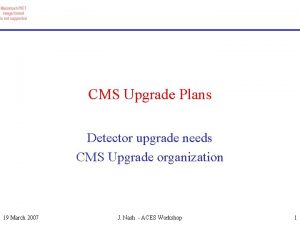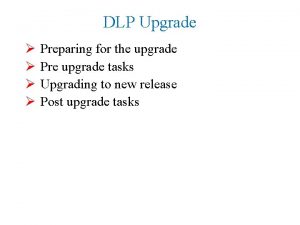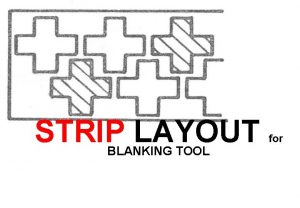VELO Upgrade Strip Chip Processing Prelim Spec of



















- Slides: 19

VELO Upgrade Strip Chip & Processing Prelim. Spec. of chip. TELL 40 Processing Chris Parkes

Manchester & Krakow • Longstanding collab. with Tomasz – Velo & ST FPGA emulation framework (Vetra) • Chip Specification – Thanks to many people for discussions • Jointly taken responsibility for VELO TELL 40 / digital processing algorithm development (pixel/strip) • Expect Manchester responsibility in hybrid design and lab/testbeam chip testing Chris Parkes 2

Manchester • Largest university in UK, and (one of) largest Physics departments • 100+ particle physicist, and accelerator group in addition • LHCb group: 3 academics, 4 postdocs, 7 students. • Large applied physicists/engineers/technicians group • FPGA programmer, hybrid design • Particular strength in silicon dets Chris Parkes 3

LHCb Upgrade Strip Chip • Essential Item for upgrade • Construction of a strip readout chip – Applicable to: • VELO upgrade strip option • ST silicon strip option • Potential commonality with tracker fibre option • Discussions started last summer on chip specification – Initial version produced in autumn Chris Parkes 4

Specification Key Points • See specification document for more information – Produce a version after this meeting – Current draft uploaded • • • Chip Layout Noise Analogue pulse shaping Number of bits Signal Processing Readout modes Chris Parkes 5

Chip Layout • 128 channels • Bond pad layout Make ground pads 130 square To enable directional bonding 100 um between rows 200 um long pads • 40µm effective pitch limits minimum size at 128 x 40=5120 µm. • Max size < 5. 4 mm Chris Parkes 6

Noise • <1000 e- at 10 p. F (after irradiation) • Total ionising radiation dose tolerance 50 Mrad Chris Parkes

Analogue – pulse shape • Shaper Peaking time approx 25 ns • Pulse shape requirements for 50 ke- signal • • • Remainder 25 ns after peaking time < 5% Recovery within 10 beam crossings Undershoot after 50 ns <5% • Large signal recovery • Recovery to 1 k e- after 400 ke- signal after 10 beam crossings Chris Parkes 8

How many bits ? Study for unirradiated pixels, but similar arguments Daniel Hynds Resolution: Prefer 4 bits or more with > 1 MIP dynamic range Additional bits for common mode & pedestal subtraction Baseline 6 -bits Chris Parkes 9

How Many Bits / Dynamic Range -2 • Tunable Range: 10 -50 ke– Unirradiated 300μm, 2 MIPs = 50 k e– Heavily Irradiated, 1 MIP, 8 -10 k e– Additional range for pedestal variation and common mode (current 1250 e-) • Ability to measure pedestal/ noise / common mode – 6 bits on a 50 ke range gives 800 electrons for the least significant bit (lsb). – 6 bits on a 10 ke range gives 150 electrons for lsb Chris Parkes 10

Digital Processing • Current TELL 1 -like functionality in-chip – No flexibility to change once designed ! – Keep it as simple as possible – Study on real data • Pedestal Subtraction • Common Mode subtraction (probably) • Clustering • Masking individual channels • Strip re-ordering NOT required – Strips contiguous in new sensor designs Chris Parkes 11

Digital Processing - Pedestal • Pedestal Subtraction – Individual Channel – Perform in digital part • Hence more bits in ADC, current assumption 6 – Offset variation < 1 lsb Chris Parkes 12

Digital Processing - CMS • Common Mode subtraction – Currently in TELL 1 firmware: • Mean Common Mode Subtraction (MCMS) before strip reordering – only a few counts(~1500 e-) of common mode currently – Rare (1: 1000) high energy deposition / chip specific effects • Linear CMS (LCM) after strip re-ordering – not used – Upgrade: Mean common mode groups of 32 channels • Simplest option – subtract average value of channels after pedestal subtraction • Handling of dead channels Chris Parkes 13

Digital Processing - Clustering • Clustering – Current VELO TELL 1 • Cluster seed threshold – find large values • Inclusion threshold – additional channels • Send out ADC of all strips in cluster & 3 -bit weighted centre – Upgrade • Keep simple, balance complexity/resolution against output rate • simplest – send out all strips above a threshold • Noisy Strip Masking – Required to mask noisy channels Chris Parkes 14

Readout modes / Calibration • Zero Suppressed • Non-zero suppressed – at same time at low NZS rate • Trigger-or (scintillator like) output – Self-triggering for Laboratory and testbeam • Calibration modes – Test-pulses injection front-end – Digital Data loading Chris Parkes 15

First processing meeting Chris Parkes 16

Readout modes / Calibration • Zero Suppressed • Non-zero suppressed – at same time at low NZS rate • Trigger-or (scintillator like) output – Self-triggering for Laboratory and testbeam • Calibration modes – Test-pulses injection front-end – Digital Data loading Chris Parkes 17

Final Remarks • Will include simulation (eventually emulation) of chip functionality options for study with data • Plan to emulate digital processing of chip in FPGAs for lab. / testbeam studies prior to implementation in chip • Tomasz setting up common Vetra project (VELO/ST/Sci-Fi) – He will announce meeting for after summer Chris Parkes 18

Summary • Initial specification of LHCb upgrade strip chip – Needs study and refinement based on simulation and use of current data • Essential for progress on the upgrade – Velo strip option AND Silicon tracker • Initial specification for discussion uploaded Chris Parkes 19
 Velo chip
Velo chip Prelim check
Prelim check Cornell prelim
Cornell prelim Prelim, midterm finals grading system
Prelim, midterm finals grading system Methylation & chip-on-chip microarray platform
Methylation & chip-on-chip microarray platform How does digital light processing (dlp) technology work?
How does digital light processing (dlp) technology work? Latin root spec
Latin root spec Mass spec fragments
Mass spec fragments Mx2010 spec
Mx2010 spec Splunk lookup table
Splunk lookup table Fordcedge
Fordcedge Attachment a level psychology
Attachment a level psychology Epq spec
Epq spec Computer organization & architecture: themes and variations
Computer organization & architecture: themes and variations Sun spec
Sun spec Nvme-mi spec
Nvme-mi spec Ir spec
Ir spec Spec sfs 2020
Spec sfs 2020 Focal spec
Focal spec Spec latin root
Spec latin root
